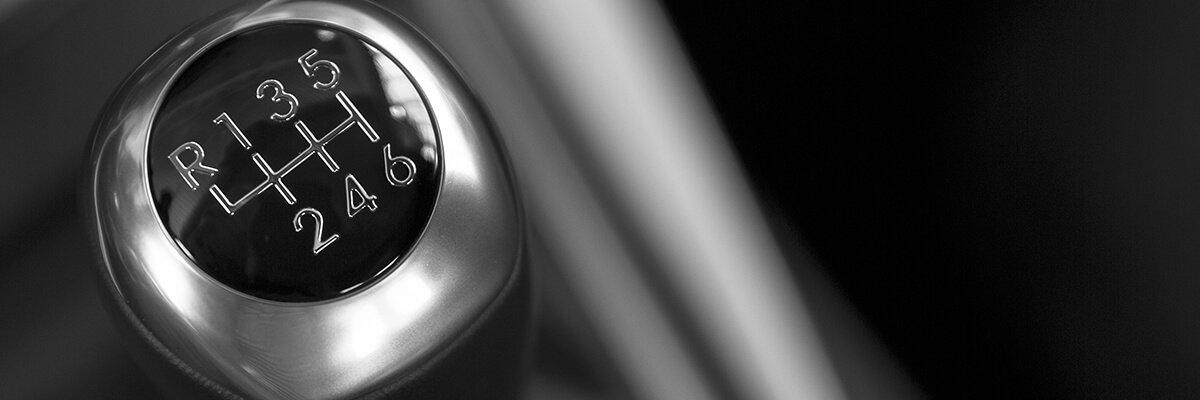When considering starting driving lessons, the first and foremost factor you must decide is whether you want to opt for manual or automatic driving lessons. Each learner is different and what works for one, may not for the other, so it is always recommended to start with doing some research into the benefits and drawback of each before coming to any decision.
Are Manual Or Automatic Driving Lessons Better?
Unfortunately, there is no real answer to the question above. It is more than likely that your peers or family members have expressed how much easier it is to operate an automatic vehicle, but while this is true, it often pays to start from the basics and learn in a manual.
If you’re currently torn between the two, we’ve devised a list of the four main questions learners ask that often sway their decision along with a full explanation of each.
Are The Gears Different?
The most significant way that you can differentiate a manual vehicle from an automatic is whether you can see a gear stick or not. If there is, the car is manual and is there isn’t; it is an automatic.
When driving a manual vehicle, you are required to change gear whenever you want to increase or decrease your speed. Once you get used to driving, you will know exactly when you’re due to change up or down gears without a second thought, but when you are new to driving, always look out for signs that your car is telling you to change gears. If you are driving slowly in a high gear, you will feel as if it is starting to judder, which if left unchanged, will most likely force the vehicle to stall. On the other hand, if you fail to change to a higher gear when increasing speed, the engine will become incredibly loud and over time, will cause internal damage.
Automatic vehicles are very smart when it comes to gear changes; there is a huge chain of different mechanical factors inside the car that will judge itself when a gear needs to be changed. You will not need to worry about moving up or down gears; your vehicle will do it for you.
Although removing the worry of changing gears does make each journey considerably easier, many drivers often prefer a manual because they feel as if they have control over the car, not the other way round.

Does An Automatic Car Have A Clutch?
Most automatic vehicles do not have a clutch pedal.
The clutch pedals primary purpose is to allow the engine to disengage, so you are able to change up or down gears. If your vehicle does not require you to change gears, then there is no need to install a clutch pedal, you will only have an acceleration and a brake pedal.
As a learner, getting used to the clutch and understanding clutch control is often the hardest aspects to get to grips with, but once you’ve got it, then it is no longer a worry. Each vehicle has a different bite point, which means that raising it slightly too quickly will force the car to stall. Stalling is the most significant problems for new drivers and commonly occurs when moving off from stationary, such as at traffic lights or a large roundabout.
For example, if you were taking driving lessons in Milton Keynes, constant stopping and starting at roundabouts would be very common especially during rush hour. Your driving instructor would take particular care in ensuring that you were comfortable with the bite point of their vehicle before taking you on busy roads.
As there is no clutch or bite point to worry about in an automatic vehicle, it is physically impossible to stall, so you will always be able to move off quickly and smoothly. Clutch control takes up a considerable chunk of your concentration during lessons, so removing the worry means you can focus on furthering skills such as observation and manoeuvres.

Are Manual Cars Cheaper?
After taking into consideration every expense that comes alongside purchasing and running a vehicle, yes, manual cars do work out all round cheaper.
Particularly for first-time drivers, your first car is likely to be one of the most significant investments you’ve made so far, so a smaller car that can get you from A to B and is cheap to run is usually a keen favourite. Whether you opt for buying a new or second-hand vehicle, there is likely to be considerably more choice at lower prices if you go for a manual car over an automatic.
Due to the complex internal components of an automatic vehicle, if you run into an issue or need a part replaced, it is likely to cost you a considerable chunk of money.
Passing your driving test often means you’ll want to make the most out of your new found independence and drive everywhere you can, which means you’ll be needing to fill up with fuel often. As a whole, research shows that fuel for manual vehicles cost up to 15% less than automatic.

Can You Drive A Manual If You Passed In An Automatic?
The answer is no. If you took lessons and passed your practical test in an automatic vehicle, then you cannot legally drive a manual. You must retake manual driving lessons, whether this may be an intensive driving course or weekly lessons and then pass a manual, practical test.
Whereas, if you pass in a manual vehicle, you are free to drive either option, you have gained a full UK drivers licence. You will not take to retake lessons or your test also to drive an automatic as your licence entitles you for both.
What Option Will You Choose?
There are many different advantages and disadvantages to both learning in an automatic vehicle or in a manual; it very much depends on your preferred way of learning. It is essential to take into consideration aspects such as how often you will be using your car, your average length of the journey and the price in which you are willing to pay for car insurance.
